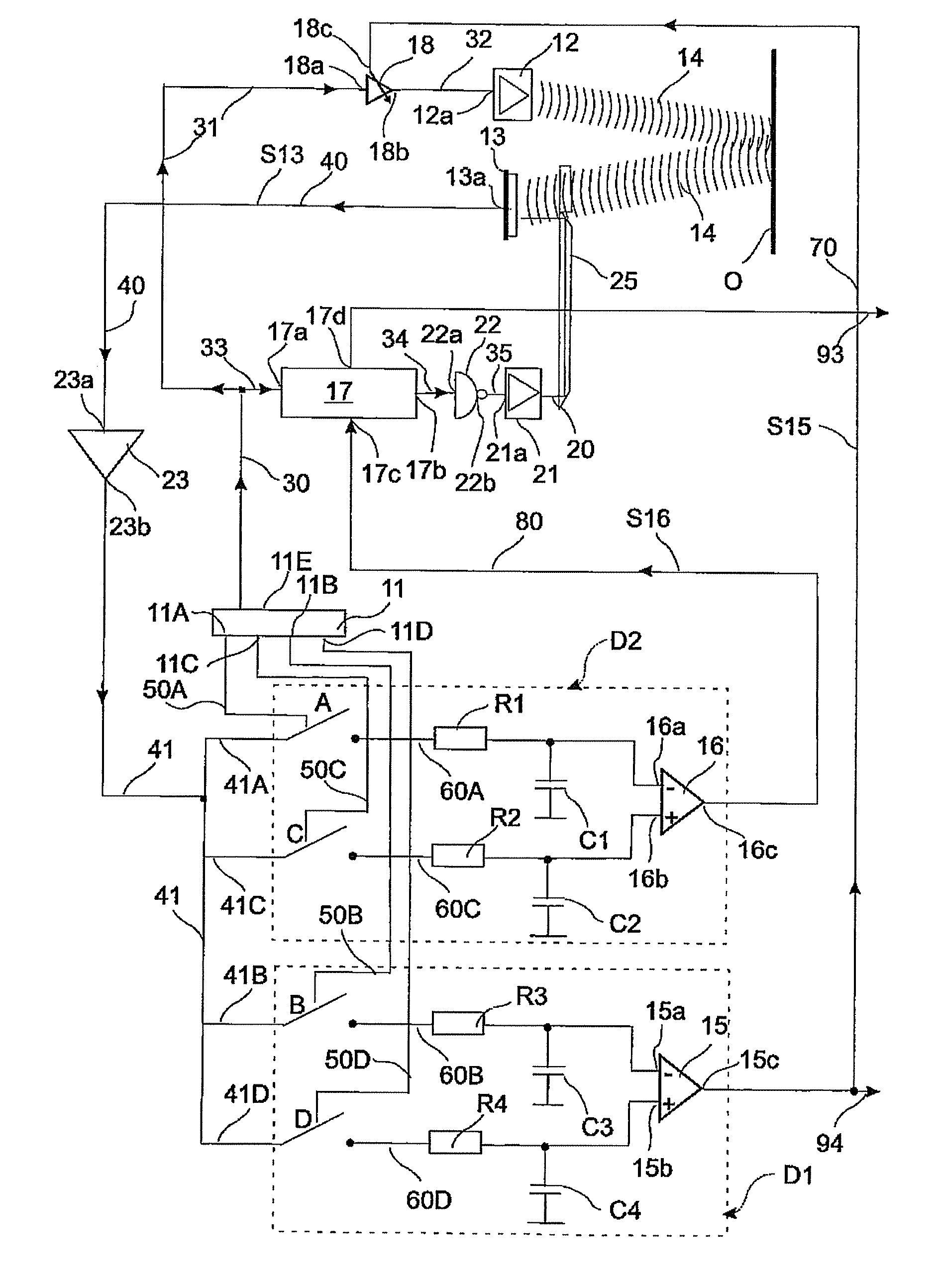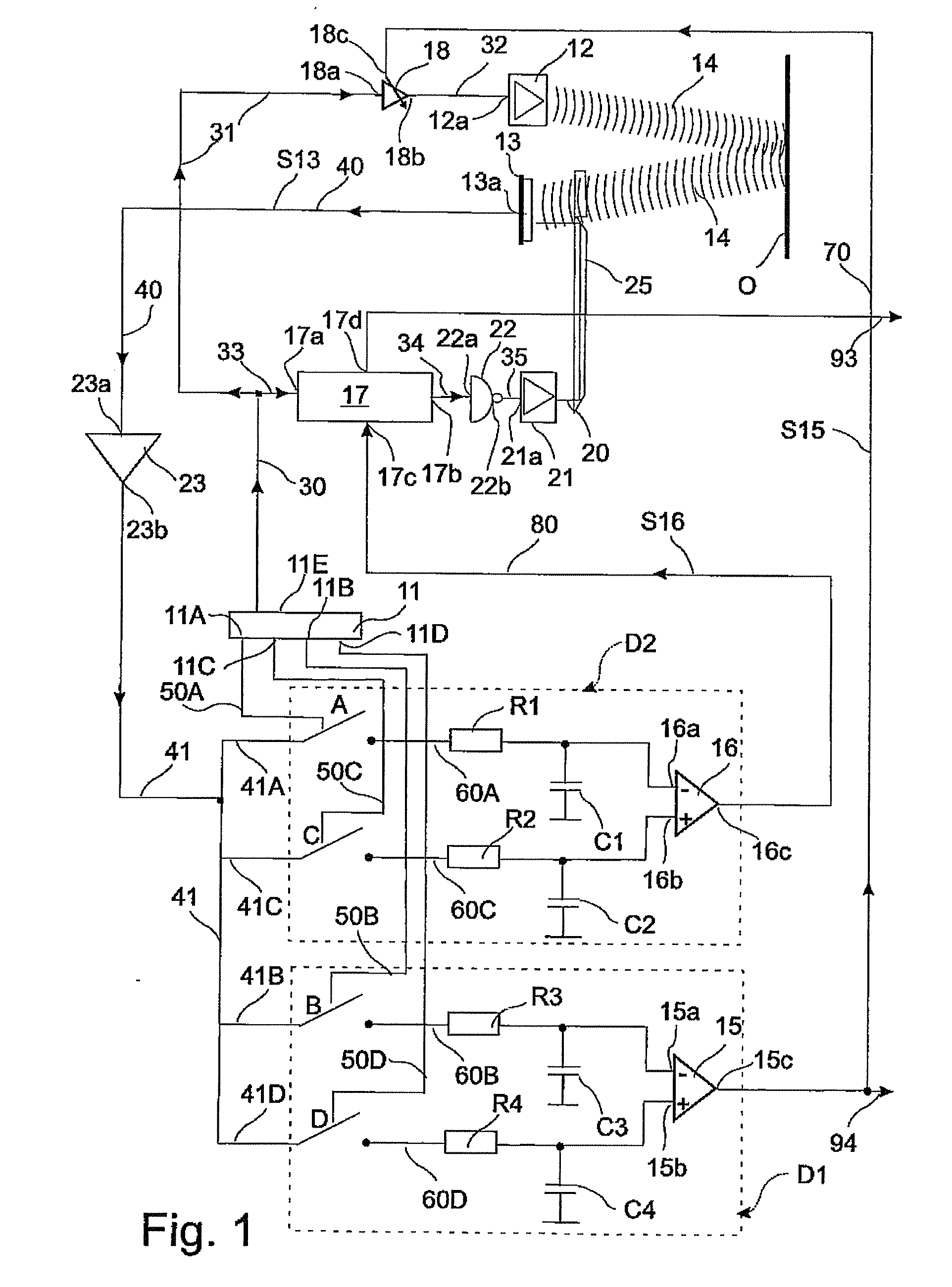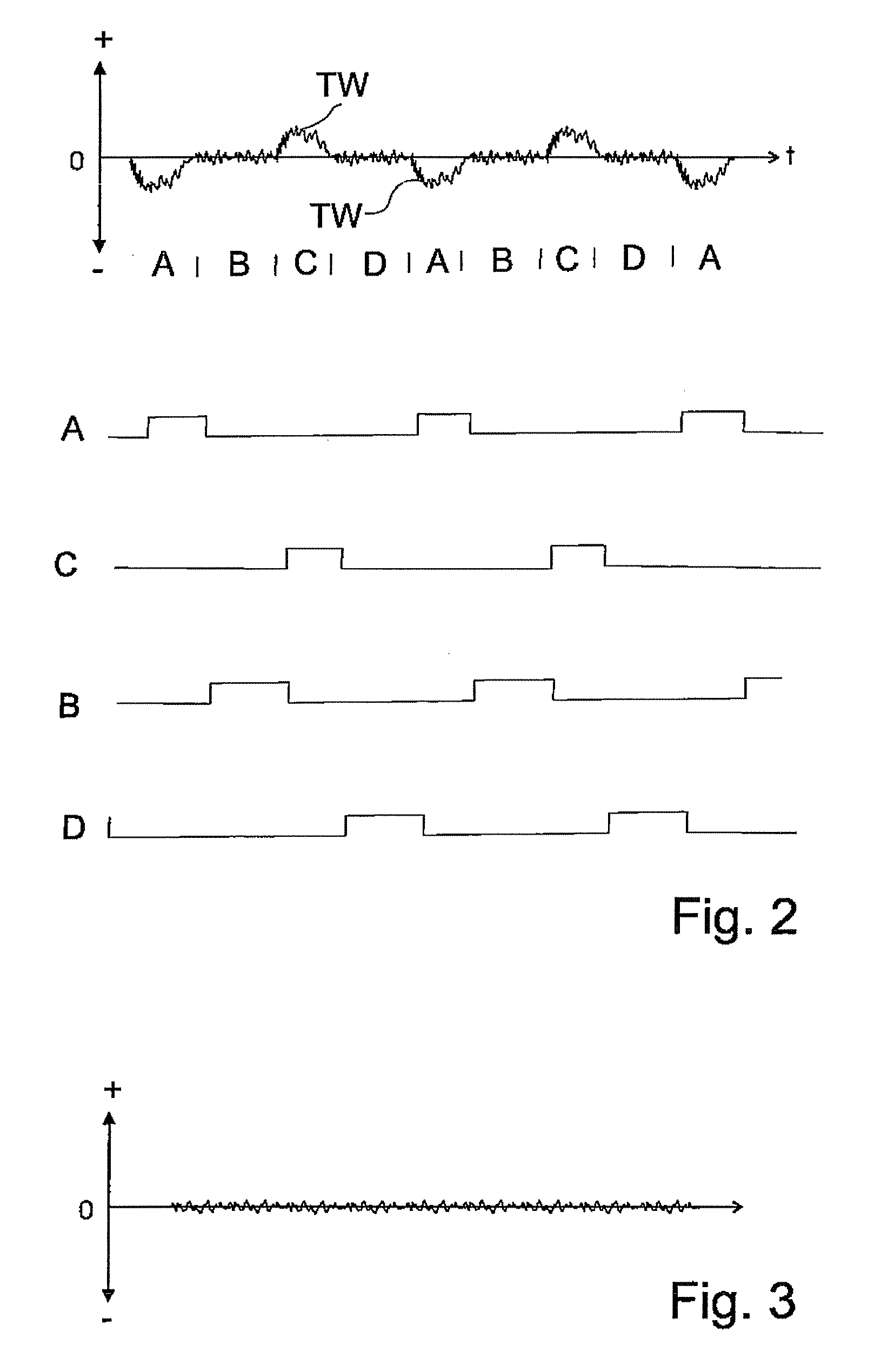Method For Light Propagation Time Measurement
a technology of light propagation time and measurement method, which is applied in distance measurement, instruments, surveying and navigation, etc., can solve the problems of difficult to determine the exact point of incidence, still more difficult, and the rise of sending leds
- Summary
- Abstract
- Description
- Claims
- Application Information
AI Technical Summary
Benefits of technology
Problems solved by technology
Method used
Image
Examples
Embodiment Construction
[0044]The invention is now described in more detail in exemplary manner with reference to the accompanying drawings. Nevertheless, the exemplary embodiments are merely examples which are not intended to restrict the inventive concept to a certain arrangement.
[0045]Before the invention is described in detail, it should be pointed out that it is not restricted to the particular components of the circuit or the particular method steps since these components and methods can vary. The terms used here are merely intended to describe special embodiments and are not used in a restrictive manner. If, in addition, the singular or indefinite article is used in the description and in the Claims, this also refers to a plurality of these elements as long as the general context is not unambiguously making something else clear.
[0046]The invention enables a distance measurement to be made which permits of an accurate light propagation time measurement that is free of extraneous light problems, indep...
PUM
 Login to View More
Login to View More Abstract
Description
Claims
Application Information
 Login to View More
Login to View More - R&D
- Intellectual Property
- Life Sciences
- Materials
- Tech Scout
- Unparalleled Data Quality
- Higher Quality Content
- 60% Fewer Hallucinations
Browse by: Latest US Patents, China's latest patents, Technical Efficacy Thesaurus, Application Domain, Technology Topic, Popular Technical Reports.
© 2025 PatSnap. All rights reserved.Legal|Privacy policy|Modern Slavery Act Transparency Statement|Sitemap|About US| Contact US: help@patsnap.com



